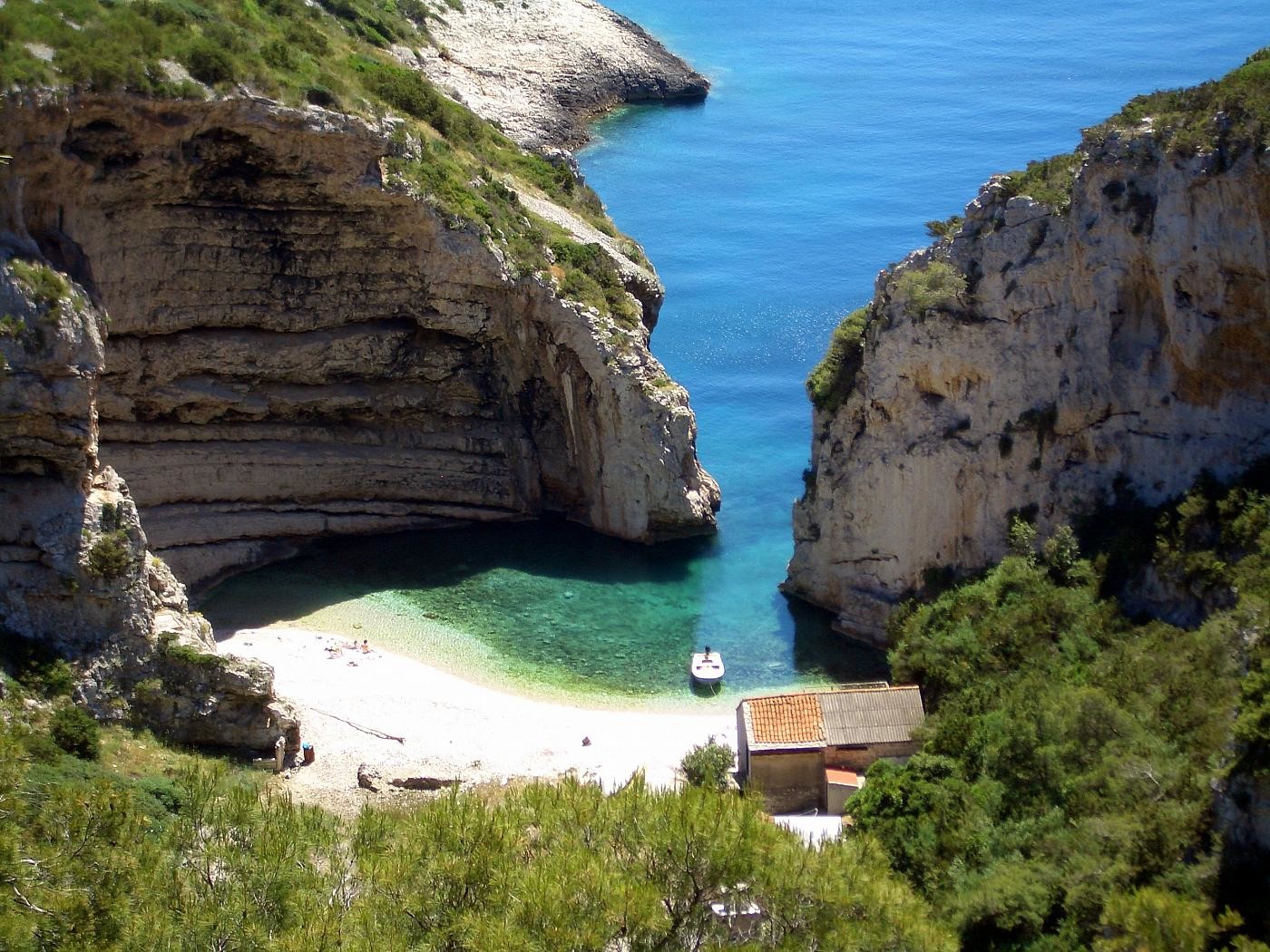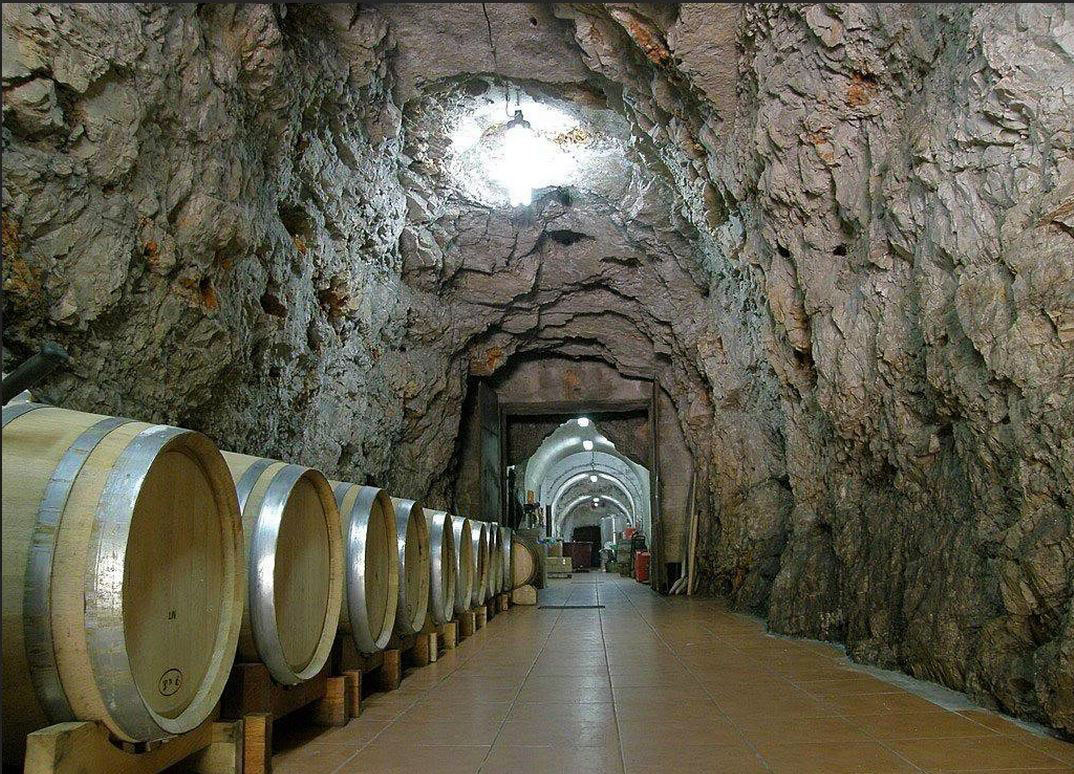Vis Island
Hello guys! I have already mentioned this in another post but I have decided to tell you all about it with my usual rigour and cheek about Vis Island. And out of all the islands in Croatia, Vis is the most mysterious (even for the locals)

From the main central, Dalmatia is the one that is furthest away from the coast. Vis has played a huge part in its recent history, serving as a military base for the Yugoslav National Army and it has been closed to foreign visitors since the decade of 1950 until 1989. Thanks to its isolation, it has freed itself from touristic urbanisation (and from urbanisation in general) and it has barely been inhabited for many years, since the Islanders were obligated to search for work in other places of Croatia.
But like what happened in other impoverished Mediterranean islands, the lack of urbanisation in Vis has become the main tourist attraction. Actually, foreign travellers and locals came in flocks to the island in search of authenticity, nature, peace and quiet, and culinary delicacies. In Vis, some of the best Croaciavugava (white) and yplavac (red) wines are made and you will see miles of vineyards all over the island.

Also, you can try some of the freshest fish in the country thanks to a fishing tradition that remains.
Vis is divided into two small towns on the shores of two big bays: the town of Vis (northeastern) and Komiza, southwest to the rugged coastline and is dotted with beautiful coves, caves and a couple of sandy beaches. The ancient vestiges of the island are exhibited in the Museum of Archaeology and in every corner of the village of Vis offers an interesting additional approximation to the complete charisma of this diminutive island.
The island was an important military base for the partisans of Tito. Here he established his general cartels in a cave of the Hum mountain and it was from there that he coordinated the military and diplomatic actions with the allied forces and it was from there that he allegedly made his legendary statement: "we do not want what belongs to others, but we will not give them what belongs to us".
From Split, there is a ferry for cars to the town of Vis on a daily basis but bear in mind that daily cruises in the low season are practically impossible and are more suited to the islanders who are going to work on the mainland rather than to tourists. However, in July and August, there are boats departing at 9. 00 on Fridays, Saturdays and Sundays, and returning from Vis at 18. 00. The rest of the week the ferry leaves Split at 9. 30 but does not return to the mainland in the afternoon.
There is one single bus on the whole island, which connects the village of Vis with Komiza. The bus awaits the arrival of the ferries from Jadrolinija in the village of Vis and sets sail for Komiza. In July and August the services are on time but in the off-season, you will surely have to wait.
To vary, on the island we have a town with the same name by a bay in the form of a horseshoe, it sits the town of Vis, that was the first colony of the island. With a simple walk, you can see the remains of a Greek cemetery, Roman baths and an English fortress. The arrival of ferries loaded with people adds activity into an otherwise quiet seaside town with deteriorated buildings.
The town is on the south slope of Mount Gradina and is the result of the merging of two colonies: Luka, in the northwestern part of the bay, and Kut, to the southeast. Elferryamarra in Luka but you can reach Kut through the promenade, where the beaches abound. If you continue north along the coast, you will find ancient ruins and another beach in front of Hotel Issa.
Among these places, I did not miss this beautiful place we have; the Museum of Archeology which presents extensive archaeological exhibitions but also has a rich ethnographic collection, which includes the essence of fishing, winemaking, shipbuilding and the recent history of the island. On the second floor is the largest collection of Greek Hellenistic artifacts, with Greek ceramics, jewels and sculptures. Among them is the exquisite bronze head of a Greek goddess, who resembled Aphrodite or Artemis but whom no one could specify. There is a brochure with general information on the exhibits, the history of Vis and a useful plan showing the location of the ruins in the locality.
About 100 m north of the pier and behind the tennis court, you can see the remains of a Greek cemetery next to the remains of the Greek walls. There along the coastal road, you will see the remains of Roman baths behind a fence. During the Napoleonic wars (1811-1815), the British ruled the island and built several fortresses on the hills surrounding the bay, which in the southernmost corner was the most powerful.
The views offered by the coastal roads with spectacular cliffs and very tight corners make it worth renting a car for a day. Wasps/ mountain bikes can be rented at Ionios Travel Agency in the village of Vis.
Also immersing in the waters of Vis is an unforgettable experience. There are many fish and a sunken ship! I was very surprised.
There are only a few hotels in Vis village and there are no campsites, but it should be easy to find accommodation in private homes (rooms or apartments). Navigator helps you find accommodations in private homes.
We will keep on reporting. A hug, people.

Photo gallery
Content available in other languages
- Español: Isla de Vis
- Italiano: Isola di Vis (Lissa)
- Français: L'île de Vis
Want to have your own Erasmus blog?
If you are experiencing living abroad, you're an avid traveller or want to promote the city where you live... create your own blog and share your adventures!
I want to create my Erasmus blog! →






Comments (0 comments)